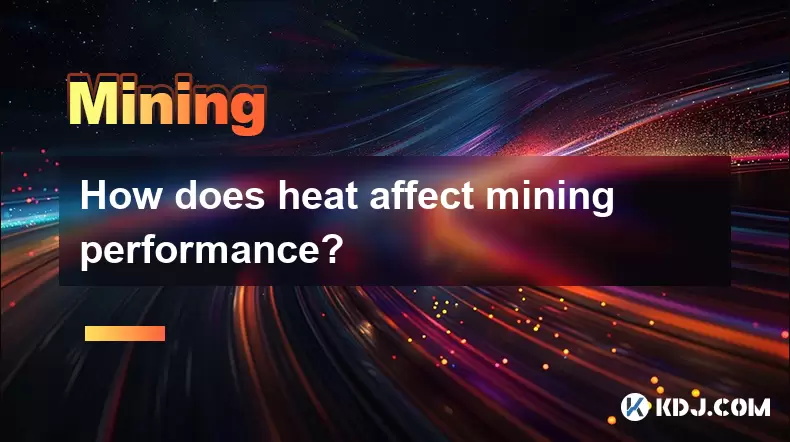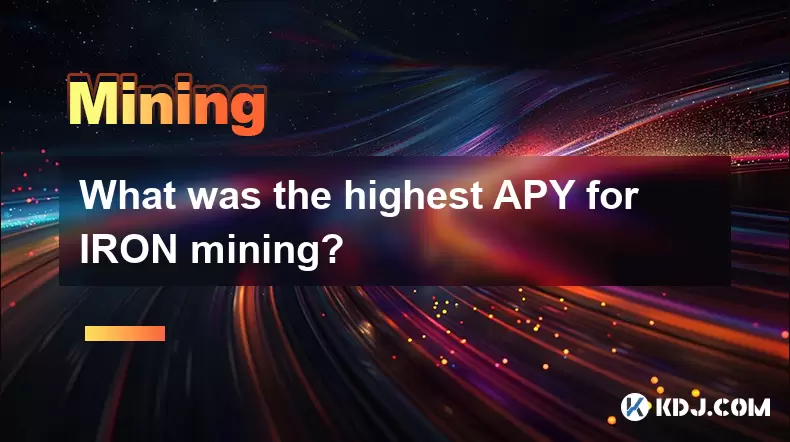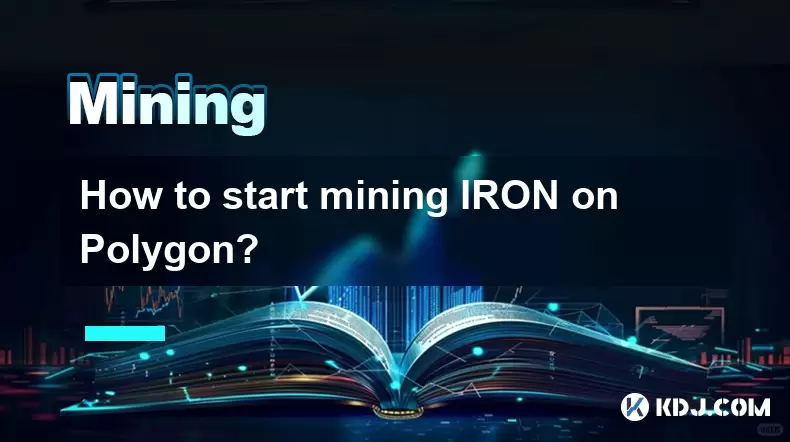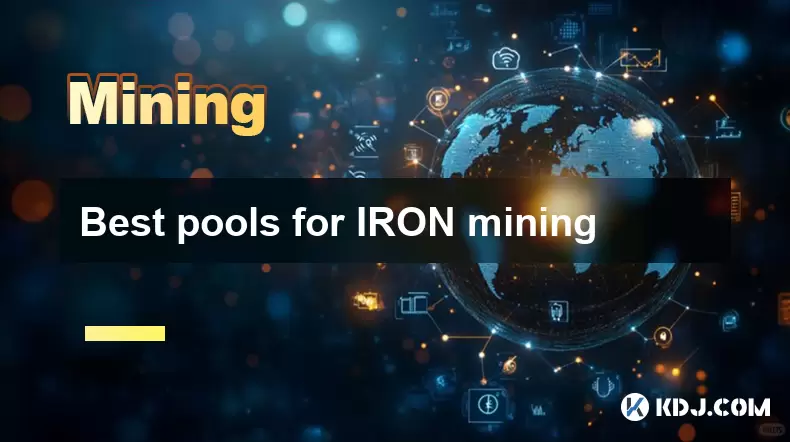-
 Bitcoin
Bitcoin $117900
0.31% -
 Ethereum
Ethereum $3766
0.28% -
 XRP
XRP $3.176
-0.31% -
 Tether USDt
Tether USDt $1.000
0.00% -
 BNB
BNB $795.6
1.51% -
 Solana
Solana $186.8
-1.09% -
 USDC
USDC $0.9999
-0.01% -
 Dogecoin
Dogecoin $0.2353
-1.33% -
 TRON
TRON $0.3226
1.49% -
 Cardano
Cardano $0.8172
-1.08% -
 Sui
Sui $4.178
3.06% -
 Hyperliquid
Hyperliquid $43.05
-3.39% -
 Stellar
Stellar $0.4367
-0.57% -
 Chainlink
Chainlink $18.62
1.47% -
 Hedera
Hedera $0.2828
6.63% -
 Bitcoin Cash
Bitcoin Cash $584.7
5.65% -
 Avalanche
Avalanche $24.81
2.53% -
 Litecoin
Litecoin $112.8
-0.88% -
 UNUS SED LEO
UNUS SED LEO $8.975
-0.08% -
 Shiba Inu
Shiba Inu $0.00001395
-1.07% -
 Toncoin
Toncoin $3.285
-1.05% -
 Ethena USDe
Ethena USDe $1.001
0.01% -
 Polkadot
Polkadot $4.123
0.76% -
 Uniswap
Uniswap $10.49
-0.18% -
 Monero
Monero $326.5
0.14% -
 Dai
Dai $0.9999
-0.02% -
 Bitget Token
Bitget Token $4.576
0.34% -
 Pepe
Pepe $0.00001247
-1.55% -
 Cronos
Cronos $0.1400
3.77% -
 Aave
Aave $295.1
-0.73%
How does heat affect mining performance?
Heat from cryptocurrency mining reduces hash rates, shortens hardware life, and increases energy costs, making effective thermal management essential for profitability.
Jul 27, 2025 at 01:29 pm

Understanding the Role of Heat in Cryptocurrency Mining
Cryptocurrency mining relies on powerful hardware such as ASICs (Application-Specific Integrated Circuits) and GPUs (Graphics Processing Units) to solve complex mathematical problems and validate transactions on blockchain networks. These devices operate continuously, consuming significant electrical power and generating substantial heat as a byproduct. The thermal output of mining equipment is directly proportional to its computational workload. When components like processors and memory units run at high utilization, they produce more waste heat, which, if not properly managed, can negatively impact system stability and efficiency. Maintaining an optimal thermal environment is therefore critical to ensuring consistent mining performance.
Impact of Elevated Temperatures on Hash Rate
The hash rate, which measures the number of calculations a mining device can perform per second, is a direct indicator of mining performance. As temperatures rise beyond manufacturer-specified thresholds, mining hardware often engages in thermal throttling to prevent damage. This means the device automatically reduces its operating frequency to lower heat production, which directly results in a decrease in hash rate. For example, an ASIC miner designed to operate at 80 TH/s under ideal conditions may drop to 72 TH/s when internal temperatures exceed 85°C. This decline is not linear and can accelerate if cooling systems fail or ambient temperatures increase. Monitoring tools like CGMiner or Awesome Miner allow users to track real-time hash rates and correlate them with temperature data, helping identify performance degradation caused by heat.
Thermal Stress and Hardware Longevity
Prolonged exposure to high temperatures accelerates electronic component degradation. Solder joints, capacitors, and voltage regulators are particularly vulnerable to thermal cycling—the repeated expansion and contraction caused by heating and cooling. Over time, this stress can lead to microfractures or complete component failure. In mining farms where hundreds of devices run 24/7, even a small increase in average operating temperature can shorten the mean time between failures (MTBF). For instance, running ASICs at 90°C instead of the recommended 70–75°C range may reduce their functional lifespan by up to 40%. This not only increases replacement costs but also leads to unexpected downtime, reducing overall mining profitability.
Ambient Temperature and Cooling Efficiency
The surrounding environment plays a crucial role in a mining setup’s thermal management. Ambient temperature refers to the air temperature in the room or facility where mining hardware is located. If ambient temperatures are high—such as in poorly ventilated garages or non-climate-controlled spaces—cooling systems become less effective. Air-cooled setups rely on temperature differentials between the hot components and the surrounding air to dissipate heat. When ambient temperatures rise, this differential shrinks, reducing heat transfer efficiency. In such cases, miners may need to deploy industrial-grade air conditioning, exhaust fans, or ducting systems to maintain airflow. Alternatively, liquid cooling solutions can be implemented, where coolant absorbs heat directly from the hardware and transfers it to external radiators, offering superior thermal regulation in high-density mining environments.
Optimizing Mining Performance Through Thermal Management
Effective thermal management involves a combination of hardware configuration, environmental control, and monitoring protocols. To maximize mining efficiency, operators should follow these steps:
- Position mining rigs in well-ventilated areas with unrestricted airflow around intake and exhaust vents.
- Install additional case fans or blower systems to enhance convection and remove hot air.
- Use thermal paste or pads on critical components to improve heat transfer to heatsinks.
- Set up temperature monitoring software such as HWiNFO or Minerstat to receive alerts when thresholds are exceeded.
- Schedule regular maintenance to clean dust from fans and heatsinks, as dust buildup acts as an insulator and traps heat.
- Consider immersion cooling for large-scale operations, where hardware is submerged in non-conductive dielectric fluid to achieve near-optimal thermal regulation.
These measures help maintain stable operating temperatures, minimizing throttling and preserving hardware integrity.
Power Consumption and Heat Correlation
There is a direct relationship between power draw and heat generation in mining equipment. Higher power consumption leads to increased thermal output. Some miners attempt to overclock their devices to boost hash rates, but this often results in disproportionate heat increases. For example, increasing voltage to achieve a 10% performance gain might raise temperatures by 25%, pushing components beyond safe limits. Conversely, undervolting—reducing power input while maintaining acceptable performance—can significantly lower heat production without drastically affecting hash rate. This technique is widely used in GPU mining, where tools like MSI Afterburner allow precise control over voltage and clock speeds, enabling miners to find a thermal and efficiency sweet spot.
Frequently Asked Questions
What is the ideal operating temperature for ASIC miners?
Most ASIC miners perform optimally between 65°C and 75°C at the chip level. Temperatures above 85°C trigger throttling, while sustained operation above 90°C risks permanent damage. Always refer to the manufacturer’s specifications for exact thresholds.
Can mining in a hot climate be profitable?
Mining in hot climates is possible but requires enhanced cooling infrastructure. Without proper cooling, efficiency drops and hardware failure rates increase, reducing profitability. Locations with naturally cooler ambient temperatures, such as northern regions, offer a thermal advantage.
Does fan speed affect mining efficiency?
Yes. Higher fan speeds improve heat dissipation, helping maintain stable temperatures and preventing throttling. However, excessively high fan speeds increase power consumption and noise. Use PWM (Pulse Width Modulation) settings to balance cooling performance and energy use.
Is it safe to mine in an enclosed space?
Mining in an enclosed space is risky unless active ventilation and cooling are implemented. Enclosed areas trap heat, leading to rapid temperature buildup. Always ensure adequate airflow and monitor temperatures closely to avoid equipment damage.
Disclaimer:info@kdj.com
The information provided is not trading advice. kdj.com does not assume any responsibility for any investments made based on the information provided in this article. Cryptocurrencies are highly volatile and it is highly recommended that you invest with caution after thorough research!
If you believe that the content used on this website infringes your copyright, please contact us immediately (info@kdj.com) and we will delete it promptly.
- Cryptos to Watch in 2025: Punisher Coin, Chainlink, and the Altcoin Arena
- 2025-07-27 18:30:13
- Bitcoin, Altcoins, Rebound: Navigating the Crypto Comeback Trail
- 2025-07-27 18:30:13
- Ethereum, Bitcoin, and Altcoins: A Shift in Crypto Tides?
- 2025-07-27 19:10:13
- Windtree Therapeutics' Bold BNB Strategy: A $520 Million Crypto Play
- 2025-07-27 19:10:13
- Solana, Staking, and Unilabs: What's the Buzz in the Crypto Space?
- 2025-07-27 16:50:13
- VeChain, HBAR, Remittix: Navigating the Crypto Landscape in 2025
- 2025-07-27 17:10:12
Related knowledge

What was the highest APY for IRON mining?
Jul 23,2025 at 05:14am
Understanding IRON Token and Its Mining MechanismThe IRON token is a stablecoin that operates within the Iron Finance ecosystem, primarily on blockcha...

What is impermanent loss in IRON pools?
Jul 23,2025 at 09:00am
Understanding Impermanent Loss in the Context of IRON PoolsImpermanent loss is a phenomenon that affects liquidity providers in decentralized finance ...

How to claim rewards from IRON mining?
Jul 23,2025 at 02:21pm
Understanding IRON Mining and Reward MechanismsIRON Finance operated as a decentralized finance (DeFi) protocol on the Polygon and Binance Smart Chain...

IRON mining tutorial for beginners
Jul 27,2025 at 12:01am
What Is IRON and How Does It Work in the Cryptocurrency Ecosystem?IRON is a cryptocurrency token that operates on the Binance Smart Chain (BSC) and is...

How to start mining IRON on Polygon?
Jul 23,2025 at 08:00pm
Understanding IRON and Its Role on PolygonIRON is a decentralized, algorithmic stablecoin designed to maintain a 1:1 peg with the US dollar. It operat...

Best pools for IRON mining
Jul 26,2025 at 03:56am
Understanding IRON Mining and Its Unique MechanismIRON (Iron Finance) was a decentralized finance (DeFi) project that aimed to create a multi-chain al...

What was the highest APY for IRON mining?
Jul 23,2025 at 05:14am
Understanding IRON Token and Its Mining MechanismThe IRON token is a stablecoin that operates within the Iron Finance ecosystem, primarily on blockcha...

What is impermanent loss in IRON pools?
Jul 23,2025 at 09:00am
Understanding Impermanent Loss in the Context of IRON PoolsImpermanent loss is a phenomenon that affects liquidity providers in decentralized finance ...

How to claim rewards from IRON mining?
Jul 23,2025 at 02:21pm
Understanding IRON Mining and Reward MechanismsIRON Finance operated as a decentralized finance (DeFi) protocol on the Polygon and Binance Smart Chain...

IRON mining tutorial for beginners
Jul 27,2025 at 12:01am
What Is IRON and How Does It Work in the Cryptocurrency Ecosystem?IRON is a cryptocurrency token that operates on the Binance Smart Chain (BSC) and is...

How to start mining IRON on Polygon?
Jul 23,2025 at 08:00pm
Understanding IRON and Its Role on PolygonIRON is a decentralized, algorithmic stablecoin designed to maintain a 1:1 peg with the US dollar. It operat...

Best pools for IRON mining
Jul 26,2025 at 03:56am
Understanding IRON Mining and Its Unique MechanismIRON (Iron Finance) was a decentralized finance (DeFi) project that aimed to create a multi-chain al...
See all articles

























































































